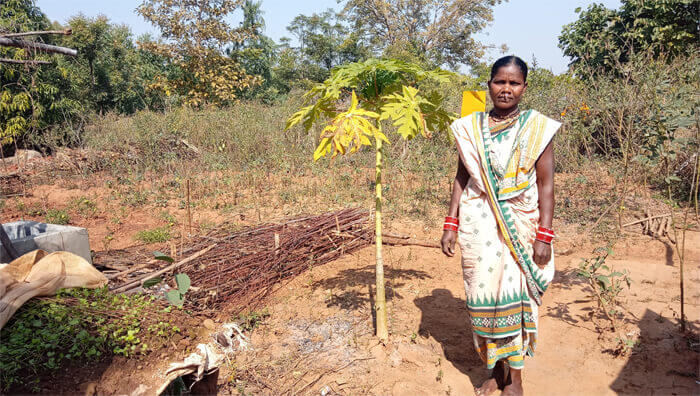Profiling of Tribal Youth Leaders
 Tribes are often isolated from other people. A significant degree of isolation is due to their ability to meet their life needs from their surroundings and due to their diffidence in engaging with the dominant population. It has led to a situation in which their education levels, life and livelihood pattern and skill sets appear to lag behind the dominant populations; attracting a charge of them being primitive and backward. Although numerically only about 8.6 per cent in India, they disproportionately represent the people living below the poverty line, are illiterate and suffer from feeble physical health. Two aspects dominate discourse and policies regarding the tribal people. The first facet pertains to their identity. The second their integration in the mainstream. An inevitable tension, between the goals of conservation of identity and those of integration in the mainstream, is posited. A common argument is that the policies promoting integration are virtually always extremely dysfunctional to the tribal identity and way of life. A counter-point to the above is voiced less stridently but often persuasively thus: almost all persons in the country, certainly including the members of the dominant population have evolved over a period of time, and no longer live in the habitat of their forefathers, practice livelihoods or practice the same pattern of traditional life which were led by their ancestors. The third dimension to be actively concerned with is the aspirations of the tribal people themselves. Thousands of tribal people have received education and learnt skills and now live in a manner that is quite akin to the lifestyle of the non-tribal people. Their brethren, as well as those others who watch them, also want to live in a modern way and enjoy the amenities and facilities available to the dominant people. They aspire to contribute as equals to the nation. Many of them now engage from a position of strength given their education and exposure to the outer world to connect back with their communities and gradually bring them to participate as equal citizens with dominant populations, while at the same time preserving cultural traditions and practices. This research would like to understand how the tribal youth look at these three dimensions of identity, integration and aspiration, how they arrive at workable compromises for themselves and how they enable their communities also to achieve a satisfactory life of hope.
Tribes are often isolated from other people. A significant degree of isolation is due to their ability to meet their life needs from their surroundings and due to their diffidence in engaging with the dominant population. It has led to a situation in which their education levels, life and livelihood pattern and skill sets appear to lag behind the dominant populations; attracting a charge of them being primitive and backward. Although numerically only about 8.6 per cent in India, they disproportionately represent the people living below the poverty line, are illiterate and suffer from feeble physical health. Two aspects dominate discourse and policies regarding the tribal people. The first facet pertains to their identity. The second their integration in the mainstream. An inevitable tension, between the goals of conservation of identity and those of integration in the mainstream, is posited. A common argument is that the policies promoting integration are virtually always extremely dysfunctional to the tribal identity and way of life. A counter-point to the above is voiced less stridently but often persuasively thus: almost all persons in the country, certainly including the members of the dominant population have evolved over a period of time, and no longer live in the habitat of their forefathers, practice livelihoods or practice the same pattern of traditional life which were led by their ancestors. The third dimension to be actively concerned with is the aspirations of the tribal people themselves. Thousands of tribal people have received education and learnt skills and now live in a manner that is quite akin to the lifestyle of the non-tribal people. Their brethren, as well as those others who watch them, also want to live in a modern way and enjoy the amenities and facilities available to the dominant people. They aspire to contribute as equals to the nation. Many of them now engage from a position of strength given their education and exposure to the outer world to connect back with their communities and gradually bring them to participate as equal citizens with dominant populations, while at the same time preserving cultural traditions and practices. This research would like to understand how the tribal youth look at these three dimensions of identity, integration and aspiration, how they arrive at workable compromises for themselves and how they enable their communities also to achieve a satisfactory life of hope.
